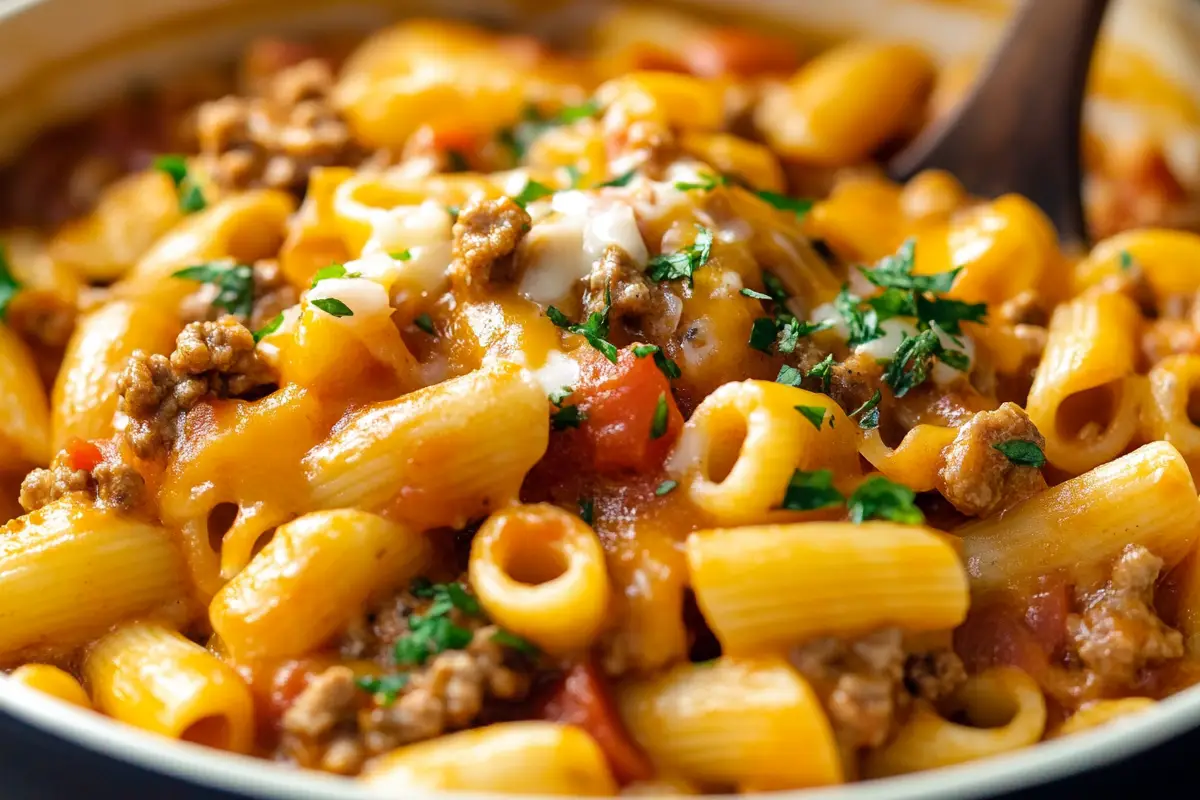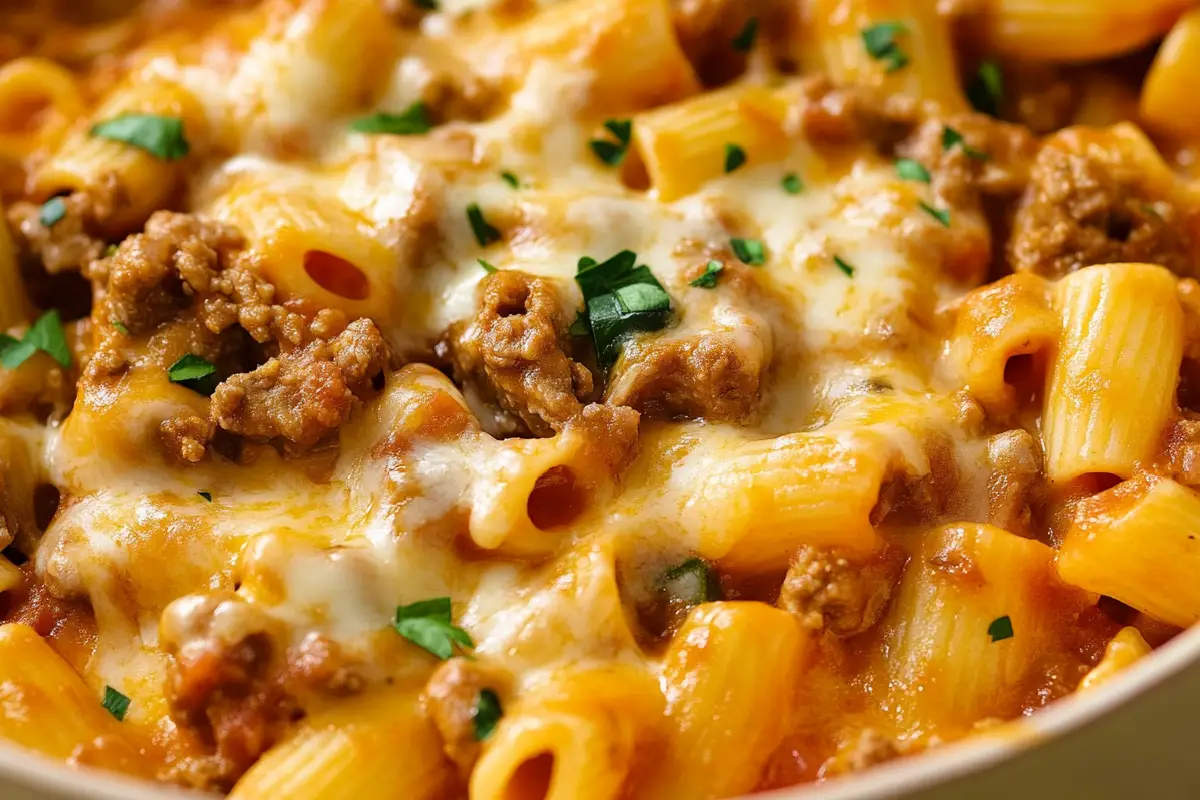Taco pasta is a tasty blend of two popular dishes—tacos and pasta. It’s a crowd-pleaser that brings together the hearty, comforting nature of pasta with the bold, flavorful essence of tacos. But when you’re paying attention to your carbohydrate intake, it’s important to understand how many carbs are in taco pasta and whether it’s suitable for your dietary needs.
In this extended article, we will explore the carbohydrate content of taco pasta in detail, how you can modify it for lower-carb options, and the impact of this dish on various diets such as keto, low-carb, and diabetic-friendly diets. Additionally, we’ll cover portion control, health benefits, and more variations of taco pasta to suit different preferences.
Taco Pasta Ingredients and Their Carbohydrate Impact
The carbohydrate content in taco pasta largely depends on its ingredients. Here’s a breakdown of some typical ingredients and how they contribute to the overall carb count:
- Pasta (Regular or Whole Wheat): Pasta is the main source of carbohydrates in taco pasta. Regular pasta contains about 43 grams of carbs per 1-cup serving, while whole wheat pasta is slightly lower at around 37 grams of carbs per 1-cup serving. If you’re looking to reduce the carb count, switching to low-carb alternatives such as zucchini noodles or shirataki noodles is a good idea.
- Ground Beef or Turkey: Meat itself doesn’t contribute significant carbs, but fattier cuts can increase the calorie count. Ground turkey is a leaner option compared to beef, but both are low-carb.
- Taco Seasoning: Store-bought taco seasoning may contain hidden sugars and starches, contributing to the overall carb count. A homemade taco seasoning blend can help reduce carbohydrate intake.
- Cheese (Cheddar, Cream Cheese, Sour Cream): While cheese and cream-based products add fat and protein, they typically have very low carbohydrate content—usually less than 1 gram per tablespoon.
- Tomato-Based Sauces: Canned tomatoes and sauces often contain added sugars, which increase the carb count. Be sure to read labels or make your own sauces to limit unnecessary sugar intake.
Understanding the contributions of each ingredient helps you make more informed decisions when preparing taco pasta. For those trying to manage their carb intake, swapping ingredients can make a big difference.
Taco Pasta Macronutrient Breakdown

The macronutrient breakdown of a standard serving of taco pasta (about 1 cup) looks something like this:
- Calories: 258
- Carbohydrates: 23g
- Protein: 16g
- Fat: 12g
The dish provides a balanced amount of protein and fats, but carbohydrates make up about 35% of its total caloric content. This makes it a relatively high-carb meal for people following low-carb or ketogenic diets. However, with a few ingredient swaps, you can reduce the carbohydrate content while still enjoying taco pasta.
Carb-Impact on Low-Carb and Ketogenic Diets
For individuals following a low-carb or ketogenic diet, reducing carb intake is a priority. A ketogenic diet typically limits carbs to around 20 to 50 grams per day, which means a single serving of taco pasta could take up a significant portion of your daily allowance. That said, there are plenty of ways to enjoy taco pasta without breaking your diet:
Low-Carb and Keto-Friendly Alternatives
Zucchini Noodles (Zoodles)
Replacing regular pasta with zucchini noodles is one of the best low-carb swaps. Zoodles contain only 4 grams of carbs per cup, making them an ideal option for ketogenic and low-carb diets. They also provide fiber, vitamins, and minerals, making them a nutrient-dense choice.
Shirataki Noodles
Shirataki noodles, often called “miracle noodles,” are another excellent substitute. These noodles contain less than 1 gram of carbohydrates per serving, making them one of the most keto-friendly pasta alternatives. They’re made from the konjac plant and are very low in calories and carbs.
Spaghetti Squash
Spaghetti squash is a popular pasta alternative that provides a unique texture. One cup of cooked spaghetti squash contains about 7 grams of carbs, which is far lower than traditional pasta. It’s also rich in vitamins A and C, making it a nutritious choice.
Making Your Own Low-Carb Taco Seasoning
Store-bought taco seasoning often contains hidden sugars and starches, which add to the carb count. To reduce carbs, try making your own taco seasoning mix with ingredients like cumin, chili powder, garlic powder, and paprika. Not only is this healthier, but it allows you to control the sodium and carb levels.
Portion Control: Managing Carbs in Taco Pasta
Portion control plays a significant role in managing carbohydrate intake, especially if you don’t want to give up pasta altogether. Even if you opt for traditional pasta, reducing your portion size can help you stay within your carb limits.
Here are a few strategies for better portion control:
- Use smaller plates: Studies show that people eat less when using smaller plates. This simple trick can help you reduce your pasta serving size without feeling deprived.
- Measure your portions: It’s easy to over-serve pasta when you’re eyeballing measurements. Use a kitchen scale or measuring cups to ensure your pasta portions stay within your carb limits.
- Add more vegetables: Bulking up your taco pasta with non-starchy vegetables like spinach, bell peppers, and zucchini can add volume and nutrients without increasing the carb count. Vegetables are high in fiber, which can help you feel fuller for longer.
Health Benefits of Taco Pasta Ingredients
Despite its carbohydrate content, taco pasta can offer several health benefits depending on the ingredients you use. Here are some of the ways you can make this dish healthier:
Using Lean Proteins
Opting for lean ground beef or ground turkey can reduce the fat content in taco pasta while still providing plenty of protein. Protein is essential for muscle repair, hormone production, and maintaining overall health. Choosing lean proteins also helps reduce the calorie count.
Whole Wheat and Gluten-Free Pasta
Switching to whole wheat or gluten-free pasta can improve the nutritional value of taco pasta by adding more fiber and reducing the glycemic impact of the meal. Fiber helps with digestion, blood sugar regulation, and long-term weight management. Whole wheat pasta contains more complex carbs than refined pasta, which means it’s digested more slowly, helping you feel fuller for longer.
Adding More Vegetables
Including more vegetables like bell peppers, onions, spinach, or even black beans can boost the fiber content and make taco pasta more nutrient-dense. Fiber is known for promoting digestive health, lowering cholesterol levels, and stabilizing blood sugar.
Taco Pasta for Diabetics
For individuals with diabetes, controlling carbohydrate intake is critical. While taco pasta can be high in carbs, it doesn’t have to be off-limits. By making smart ingredient choices and paying attention to portion sizes, you can still enjoy this dish without compromising your health.
How to Make Taco Pasta Diabetic-Friendly
Here are some tips for making taco pasta more suitable for people with diabetes:
- Use whole wheat or low-carb pasta alternatives: As mentioned earlier, options like zoodles and shirataki noodles are much lower in carbs than regular pasta.
- Include non-starchy vegetables: Load your taco pasta with vegetables that are low in carbs and high in fiber, such as leafy greens and peppers.
- Control portion sizes: Eating smaller portions of pasta can help manage blood sugar levels more effectively. Pairing your meal with high-fiber vegetables and lean proteins can help slow the absorption of carbohydrates.
FAQs About Taco Pasta
Is Taco Pasta Suitable for Weight Loss?
Taco pasta can fit into a weight-loss plan if portion sizes are controlled and healthier ingredient swaps are used. By choosing whole wheat or low-carb pasta alternatives and reducing the amount of cheese and cream, you can lower the calorie and carbohydrate content without sacrificing flavor.
Can You Make Taco Pasta Dairy-Free?
Yes! To make taco pasta dairy-free, substitute cheese and cream-based ingredients with dairy-free alternatives like coconut cream or plant-based cheeses. These options tend to have fewer carbs and can be a good choice for those avoiding dairy.
How Can I Make Taco Pasta Vegan?
To make a vegan version of taco pasta, replace the ground meat with plant-based alternatives like tofu, lentils, or beans. Use vegan cheeses or nutritional yeast to mimic the cheesy flavor, and opt for pasta made from lentils, chickpeas, or brown rice to keep it plant-based.
How Many Calories Are in Taco Pasta?
A standard serving of taco pasta contains approximately 258 calories, but this can vary depending on the specific ingredients and portion sizes used. Reducing the amount of cheese, cream, and pasta can help lower the calorie content.
Variations of Taco Pasta

Taco pasta is a versatile dish that can be adapted to suit various tastes and dietary preferences. Here are a few creative variations:
Spicy Taco Pasta
For those who love spice, add some heat to your taco pasta with jalapeños, cayenne pepper, or hot sauce. You can also use a spicier taco seasoning mix for an extra kick.
Vegetarian Taco Pasta
Swap the meat for plant-based protein options like black beans, lentils, or crumbled tofu. These ingredients not only reduce the carbohydrate content but also increase the fiber and nutrient density of the dish.
One-Pot Taco Pasta
A one-pot taco pasta recipe simplifies the cooking process by allowing you to cook everything in a single pan. This reduces cleanup time and helps the flavors meld together beautifully.
Conclusion
Taco pasta is a flavorful and comforting dish that can be easily adjusted to fit your dietary preferences. While it typically contains around 23 grams of carbs per serving, there are plenty of ways to reduce the carbohydrate content by swapping out ingredients like pasta and using healthier alternatives.
Whether you’re following a low-carb diet, managing diabetes, or simply looking for a balanced meal, taco pasta offers versatility and satisfaction. With the right adjustments, you can enjoy taco pasta guilt-free while staying within your dietary goals. Experiment with ingredients, portion sizes, and different cooking methods to create a version of taco pasta that works best for you!

